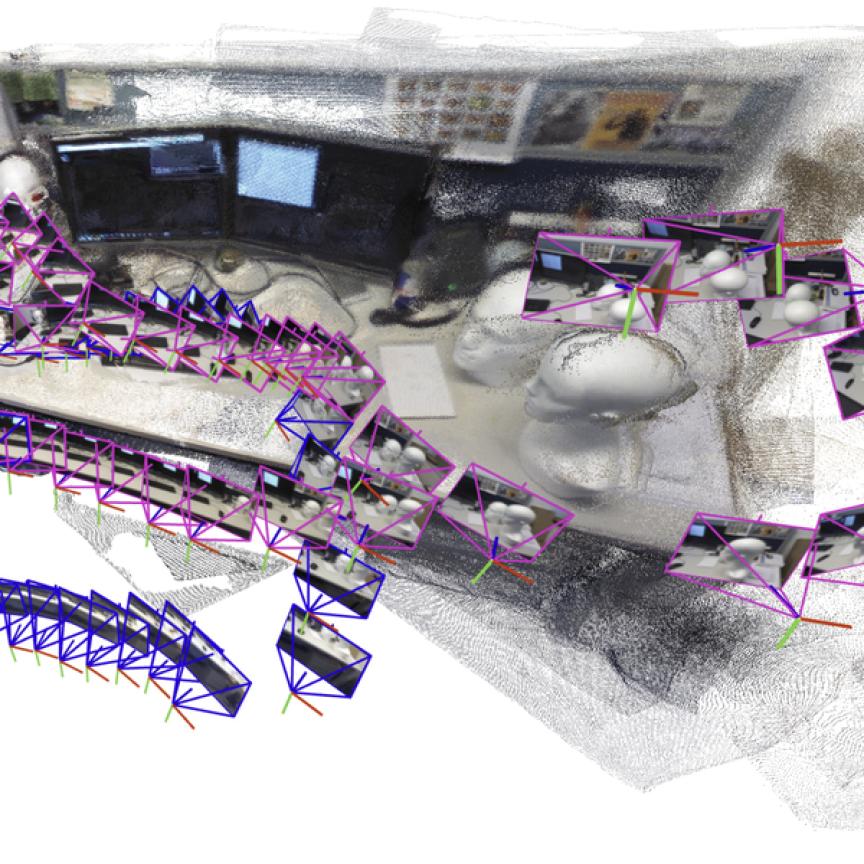Lumentum Holdings Inc. ("Lumentum") (NASDAQ: LITE), a market-leading designer and manufacturer of innovative optical and photonic products, and Ambarella, Inc. (NASDAQ: AMBA), an edge AI semiconductor and software company, today announced a new joint reference design that uniquely combines edge artificial intelligence (AI) with privacy, enabling new possibilities for smart building applications. Called Vision-D, this groundbreaking design combines Lumentum’s flood illuminator module for extremely accurate time-of-flight (ToF) 3D sensing, with Ambarella’s CV22 edge AI SoC, which provides industry-leading AI performance per watt. This combination allows small AIoT sensors with local processing to be blanketed across buildings for applications such as occupancy monitoring, intelligent space management and smart retail. Additionally, ToF 3D sensing maintains privacy by generating a point cloud with granular 3D information, but without any personally identifiable information, for applications such as healthcare and eldercare.
According to MarketsandMarkets™, the occupancy sensor market is projected to grow from $1.9 billion USD in 2020 to $3.6 billion USD by 2025, at a CAGR of 13.3% during the forecast period. The vast majority of these systems are based on passive infrared sensors (PIRs) that provide only basic information about occupants and the building environment, while a small number are using cameras that capture identifiable features. This new joint reference design opens up tremendous possibilities for adding intelligent sensing with AI processing smarts at the edge, while offering privacy and avoiding the high cost of cloud computing. Integrating intelligence directly onto these sensing nodes allows functionality and scalability, such as the creation of digital twins for automated real-time space utilization or hot desking in shared workspaces. Other applications include traffic-based hospitality staffing, cleaning and maintenance alerts to address the labor shortage, and maximized energy efficiency through the fine-tuned usage of HVAC and lighting systems.
“There are currently two choices for occupancy sensing in building automation systems—basic motion-detection devices that preserve privacy, or intelligent camera-based systems that compromise privacy,” said Jerome Gigot, Senior Director of Marketing at Ambarella. “This joint reference design combines Lumentum’s high-performance flood illuminator module with our CVflow® edge AI SoC to provide a novel solution for digital transformation that protects occupant privacy.”
“The use of sophisticated building automation and occupant monitoring solutions is expanding rapidly, driven by home healthcare and monitoring for the world’s growing senior population, efficient building usage with hybrid work schedules, and other increasingly important applications,” said Ken Huang, Director of Product Line Management at Lumentum. “This innovative reference design uniquely addresses key requirements of building automation and occupant monitoring systems by providing rich data sets and processing power while being unobtrusive in terms of both size and privacy.”
In addition to supporting multiple image sensor inputs, Ambarella’s CV22 SoC also offers a rich set of peripheral interfaces for a broad range of other sensors—including humidity, temperature and audio—to enhance environmental perception. The Lumentum 10 W flood illuminator module incorporates a high-performance, three-junction vertical-cavity surface-emitting laser (VCSEL) array for ToF 3D sensing.
The Vision-D reference design provides a versatile platform for a wide range of applications in smart building automation, healthcare, smart retail and home security. Examples include smart PIRs for home security that are able to differentiate pets from intruders; hotel environmental and scheduling systems that can intelligently adjust the HVAC temperature in reserved rooms based on real-time occupancy; and remote monitoring of aging parents without invading their privacy. Regardless of the location, AI algorithms running on this reference design can monitor occupants for sudden falls or medical events, intelligently and immediately triggering a request for emergency services.
Customers can also leverage the broad set of tools and ecosystem partners from both companies to further accelerate time to market.

